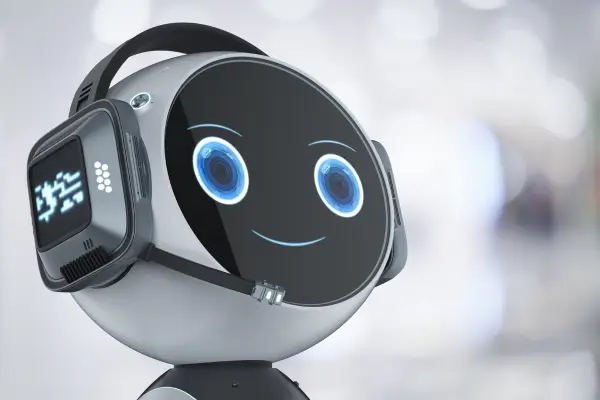How AI-powered co-creation tools are revolutionizing small business innovation is transforming the way entrepreneurs develop new ideas. These tools enable collaboration between humans and machines, unlocking creative potential like never before.
For small businesses, innovation is key to staying competitive. However, limited resources often make it challenging to experiment with new concepts. AI-powered co-creation tools offer an affordable and efficient solution.
In this article, we’ll explore how these tools work and why they matter for small businesses. You’ll learn practical ways to leverage them and drive innovation in your own company. Let’s get started.
What Are AI-Powered Co-Creation Tools?
AI-powered co-creation tools combine human creativity with artificial intelligence. These tools help generate ideas, designs, and solutions by analyzing data and suggesting improvements.
For example, platforms like Runway ML , Canva’s Magic Design , and Adobe Firefly use AI to assist in creating visual content. They suggest color palettes, layouts, and even entire design concepts based on user input.
These tools are not meant to replace human creativity. Instead, they act as collaborators, enhancing the creative process. By automating repetitive tasks, they free up time for strategic thinking.
AI-powered co-creation tools also analyze trends and customer feedback. This helps businesses identify opportunities for innovation and stay ahead of the competition.
Why AI Co-Creation Matters for Small Businesses
Small businesses often struggle to innovate due to limited budgets and expertise. AI co-creation tools level the playing field by providing access to advanced technology.
These tools reduce the time and cost of developing new products or services. For instance, an AI tool can generate multiple logo designs in minutes, saving hours of manual work.
AI co-creation also fosters collaboration within teams. Tools like Miro AI and Notion AI help brainstorm ideas and organize workflows efficiently.
By 2025, businesses that adopt AI co-creation tools are expected to outperform competitors in terms of speed and creativity. Early adoption is crucial for staying relevant.
Benefits of AI-Powered Co-Creation
AI-powered co-creation offers several advantages for small businesses. First, it accelerates the ideation process. Ideas that once took weeks to develop can now be generated in days.
Second, it improves accuracy. AI tools analyze data to ensure designs and strategies align with market demands. This reduces the risk of launching unsuccessful products.
Third, these tools are scalable. Whether you’re a solo entrepreneur or a growing team, AI co-creation adapts to your needs without additional costs.
Finally, AI enhances personalization. For example, tools like Jasper AI can create tailored marketing content based on customer preferences, boosting engagement.
How AI Co-Creation Works in Practice
AI co-creation tools work by combining user input with machine learning algorithms. For example, if you’re designing a website, an AI tool can suggest layouts based on industry trends.
Platforms like Figma with AI plugins allow designers to collaborate in real-time. The AI suggests improvements, such as optimizing spacing or choosing fonts that match the brand identity.
In product development, tools like Autodesk Generative Design use AI to create prototypes. Users input parameters, and the AI generates multiple design options, saving time and resources.
For content creation, AI tools like Copy.ai or Writesonic help write blog posts, social media captions, and email campaigns. They adapt tone and style to match your brand voice.
Examples of AI Co-Creation in Action
Many small businesses are already using AI co-creation tools to innovate. For instance, a fashion startup might use Designovel to create custom clothing designs based on customer preferences.
In the food industry, AI tools like Foodpairing help chefs experiment with flavor combinations. This leads to unique menu offerings that attract customers.
Marketing agencies use tools like HubSpot AI to co-create campaigns. The AI analyzes customer data to recommend strategies that maximize ROI.
Even small retailers benefit. AI tools like Shopify Magic help design product descriptions and visuals that convert visitors into buyers.
Tools to Get Started with AI Co-Creation
Several tools make it easy for small businesses to adopt AI co-creation. Platforms like Canva , Figma , and Runway ML are beginner-friendly and widely used.
For content creation, tools like Jasper AI and Copy.ai offer templates and suggestions. These platforms are ideal for generating blog posts, ads, and social media content.
Product design tools like Autodesk Generative Design and Tinkercad are perfect for prototyping. They allow users to experiment with shapes, materials, and structures.
When choosing a tool, consider your business goals. Many platforms offer free trials, so you can test their features before committing.
Preparing for the Future of AI Co-Creation
As AI technology evolves, its role in co-creation will expand. By 2025, tools like voice-activated AI assistants and predictive analytics platforms will become standard for small businesses.
To stay ahead, invest in learning about AI trends. Attend workshops, read case studies, and experiment with new tools as they emerge.
For example, voice AI tools like Descript can help edit audio and video content seamlessly. Early adoption positions your business as an innovator in your industry.
Focus on building a strong foundation now. The changes you implement today will prepare you for long-term success in the AI-driven marketplace.
Ready to Embrace AI Co-Creation?
Now that you understand how AI-powered co-creation tools are revolutionizing small business innovation, it’s time to take action. Start by exploring one tool that aligns with your business goals.
Imagine generating fresh ideas, designing standout visuals, and launching innovative products faster than ever. With AI co-creation, this vision can become a reality for your small business.
Don’t wait—begin integrating AI into your creative process today. Your future success depends on adapting to the changing landscape. Happy innovating!


